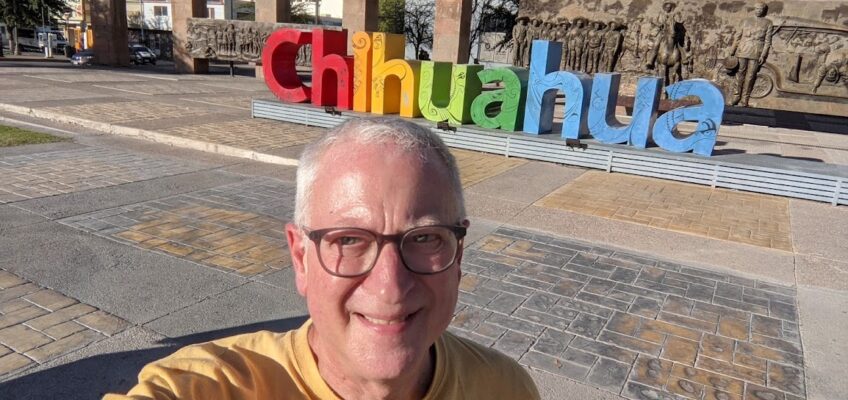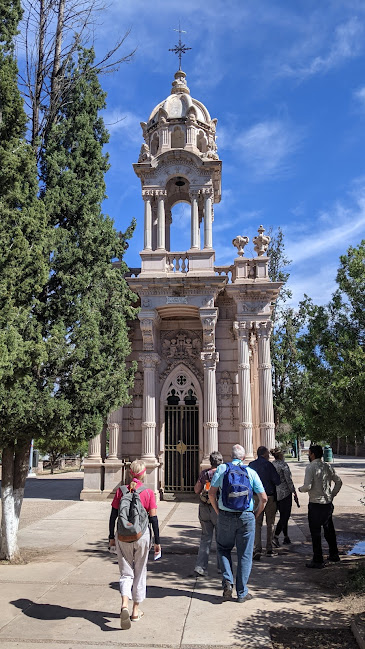The first leg of our tour to Copper Canyon was our 90-minute flight to Chihuahua. We arrived yesterday afternoon and everyone luggage came off the plane and got claimed, and mine was no where to be seen. It turns out it had fallen off the carousel and landed behind it, out of view.
I had to wonder if this was a precursor to a trip filled with bad luck. Though I guess it’s good luck that my luggage wasn’t actually lost.
Last night I joined a few of the other people on the tour and went out for dinner at a very posh restaurant called La Casona. It was old-school fancy. The service was professional, the food classic and good but not great. The real star of the night was the building itself. Formerly the home of Luiz Terrazas, governor of the state of Chihuahua on and off between 1858 and 1904, it’s a spectacle of indulgence.
After dinner I walked around a bit and saw a little of the city lit up at night.
Chihuahua City Tour
Today we had breakfast in our hotel restaurant. (The hotel, a Quality Inn, is the epitome of business class hotels: clean, spacious rooms without a lick of character.)
Following breakfast, Rosie led us on a walking tour of the historic center. At the end of the tour, we met one of those buses that looks like a trolley, and the tour continued to some other sites. For me the highlight was the Government Palace, seat of the state government. It is filled with murals by Aarón Piña Mora (1914–2009) that depict the history of Mexico and the state of Chihuahua. And the building itself is quite impressive, both inside and out.
On the “trolley” tour we stopped at a park where Pancho Villa built his mausoleum. There we had an encounter with an actor who played the part of the the outlaw turned military hero turned movie star. Pancho Villa himself, who was assassinated in 1923, was never buried in this mausoleum. It was kind of silly, but the actor actually did a nice job talking about his life.
“If the people don’t kill the Apaches, then the Apaches will kill the people”
The rest of the tour had some interesting things as well. But one thing stands out. We drove past a number of monuments to various characters in Chihuahua history. One honored Colonel Joaquin Terrazas, brother of the aforementioned Luis Terrazas. Joaquin’s claim to fame was at the Battle of Tres Castillos in 1880. There he and his men killed 62 Chiricahua Apache men, including their leader, Victorio, and 16 women and children. Victorio had been waging a guerrilla war against the US and Mexican armies in southern New Mexico, western Texas, and Chihuahua. The war began when Victorio’s followers were evicted from their homeland in New Mexico.
As Jaime, the driver of our “trolley,” told us about the monument, he acknowledged that today a monument to someone who killed a lot of indigenous people seems wrong and out of place. But, he said (and I wrote it down), “If the people don’t kill the Apaches, then the Apaches will kill the people.”
I said out loud, but not so anyone could hear, “They were all people.”
Overall, I didn’t expect much from the city of Chihuahua, and while it’s not even remotely on a par with Guanajuato or Zacatecas, I was pleasantly surprised.
Check out my Google photo album for more pictures of Chihuahua.




Joy Sherman
Hi Lane!
I read and enjoyed all 3 of your recent posts and looked at your google pictures of Chihuahua, all very interesting! It was good to see a few pics of you. BTW, you look great! Enjoy the rest of your travels.